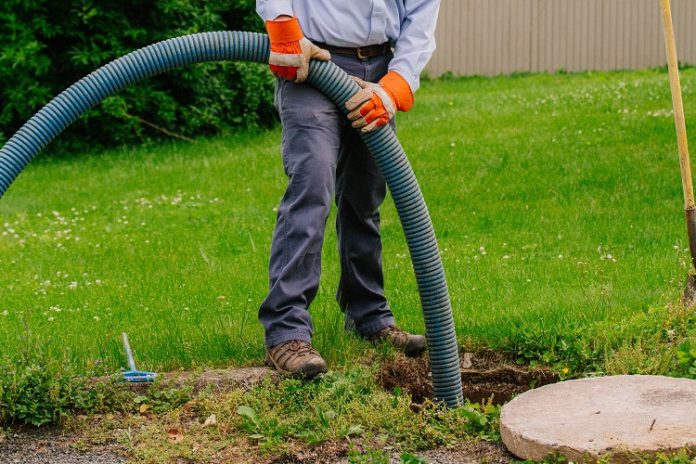First and foremost, it’s essential to understand that a septic tank serves as a primary treatment system for domestic wastewater. It separates and transforms organic substances found in the water. However, cleaning a septic tank is a complex task and should be done by professionals.
Septic tanks are a cost-effective and straightforward wastewater treatment method commonly used in isolated rural homes, businesses, or temporary worksites lacking plumbing systems.
To prevent unpleasant odors from affecting the area around the tank, septic tank pumping is required. Now, the question arises: How can you unclog a septic tank? We will provide you with the answer and a set of instructions and steps to follow. However, it is crucial to note that these tasks should never be improvised, so exercise caution.
What is the correct way to empty and clean a septic tank?
Based on the intended use of the septic tank, periodic dredging becomes necessary when the muddy water level reaches the center of the tank. This process involves both suctioning and removing grease and floating deposits, as well as extracting accumulated mud.
It is important to note that it is not advisable to vacuum out all the sludge. Activating the cleaning process up to 80% after closing the door is sufficient.
However, it’s crucial to acknowledge that this type of work can be hazardous due to the generation of gases inside the tank. Therefore, it should only be conducted by a professional or a qualified company.
Steps to follow to clean a septic tank
Properly maintaining and cleaning your septic tank is vital to ensure optimal functioning and prevent potential issues. By following specific steps, you can effectively clean your septic tank and keep it in good condition.
When followed diligently and with caution, these steps will help you maintain a healthy and efficient septic system, promoting the safe disposal of wastewater and preventing any potential risks or complications.

Step 1: Open the lid carefully
The lid should be cautiously opened to avoid inhaling the gas produced by the fermentation of sludge and manure. The concentrated methane gas will gradually dissipate.
Step 2: No smoking near the tank
It is strongly recommended not to smoke near the tank. Additionally, it is advised to refrain from smoking during the cleaning process. The methane gas that accumulates in the pit during fermentation is highly flammable and can cause explosions if exposed to smoke.
Step 3: Prepare the suction pump
Position the pump at the residual water level to initiate the emptying process. Begin by suctioning the upper layer where grease and suspended solids have settled.
Step 4: Submerge the pump slowly
Gradually submerge the vacuum pump to remove the sludge, ensuring it doesn’t reach the bottom to avoid disturbing the lower layer.
Step 5: Use a freshwater source
Fill the pit with fresh water to remove debris. Take care to verify the water supply, as it doesn’t necessarily need to exceed the amount of removed sludge.
Step 6: Clean the filter
As a precautionary measure, use pressurized water to clean the filter since a tap is being utilized.
Step 7: Stop using the suction pump
Once 80 liters of sludge have been suctioned, discontinue the pump and leave 20 liters for continued filtration. Afterward, fill the rest of the pit with clean water.
Step 8: Close the lid of the well
After completing the process, securely close the lid to prevent easy opening. It’s important to remember that improperly opening the septic tank can lead to suffocation. Therefore, exercise caution during this drainage procedure.
Regular septic tank maintenance is crucial to avoid unpleasant odors, health hazards and overflows. By following proper maintenance procedures, such as periodic pumping and inspection, you can ensure the optimal functioning of your septic system and keep it in good condition.














